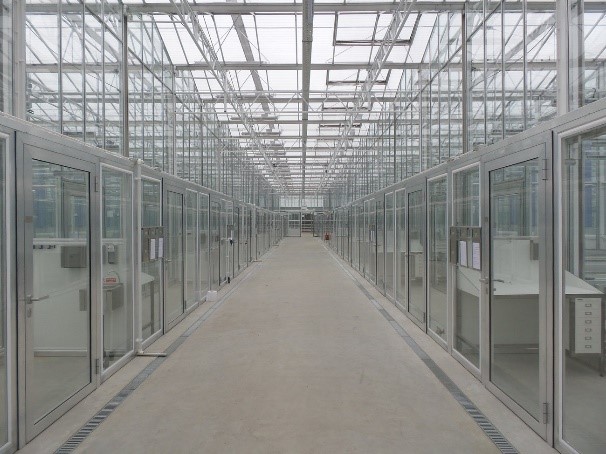
Controlled environment agriculture (CEA) thrives on precision. Every day, growers rely on carefully balanced inputs (light, nutrients, temperature, airflow, and irrigation), all tuned to maximize plant performance. These systems are engineered to maintain consistency. But like any moving system, small inefficiencies can quietly build until they begin to interfere with crop outcomes.
This is where routine maintenance plays a powerful role. A clogged drain. A slow emitter. A slight shift in the bench slope. These issues often develop gradually and go unnoticed until they cause a bigger interruption. By the time a crop shows symptoms, the window for a low-effort solution may have already passed.
Fortunately, many of these challenges are preventable. A few minutes of focused attention at the right time can make the difference between a system that stays on track and one that requires constant correction. When small tasks become habits, they can help growers avoid hours of rework, protect crop uniformity, and keep systems operating smoothly.
1. Look Beyond the Crop During Walkthroughs
Most growers walk their facilities daily, checking canopy development, scouting for pests, and making sure environmental conditions look stable. These walkthroughs are also an opportunity to assess the systems running in the background.
Signs like a fan that hums differently than it did last week, a slow-forming puddle under a fitting, or a pump that cycles more often than usual may not demand action immediately, but they often appear before a more disruptive issue surfaces.
By adding a few system checkpoints to an already established walkthrough, growers can spot early warning signs.
2. Verify Flow, Not Just Function
Irrigation automation makes it easy to assume that delivery happens as it should. But over time, drippers clog, pressure fluctuates, and flow can become uneven. In high-density systems or fast-turnover crops, even small inconsistencies in water or nutrient delivery can disrupt uniformity and delay harvest targets.
Taking a few minutes each day to confirm flow can help growers catch issues early. Place a small collection cup or graduated cylinder under several emitters across the system — ideally from the start, middle, and end of a run. Compare volumes across zones and between cycles. Uneven distribution might point to a clogged emitter, declining pressure, or buildup of debris inside the line. Biofilm, algae, and mineral deposits are common culprits in recirculating or warm water systems and tend to build slowly over time.
Many growers rotate the sections they test each day, so they review every part of their system weekly. Some growers install visual flow indicators, such as micro-tube drippers with visible pulses or color-coded flag emitters, which make it easier to spot pressure differences at a glance.
Verifying flow with a hands-on approach, rather than relying solely on controller data, helps protect one of the most essential systems in your operation.
3. Don’t Overlook Drainage
Drainage issues tend to develop slowly, but their impact adds up quickly. When water doesn’t exit properly, it can reduce oxygen to the roots, create pooling, and elevate disease risk. In recirculating systems, slow drainage can throw off timing for subsequent cycles and contribute to inconsistent nutrient availability.
After irrigation cycles or flushing, take a quick look at drainage areas. Watch for standing water and check for algae buildup or sediment near elbows or grates. If water is taking longer than normal to clear, it’s probably time to clean or adjust the system.
This is especially important in zones with slope-dependent drainage or shallow substrate profiles. Maintaining proper outflow is just as important as ensuring correct inflow. Healthy root systems rely on both.
4. Slope Shift Is Easy to Miss
Benches settle. Gutters warp. Channels flex with temperature swings. A slight change in slope might seem insignificant, but over time, it can cause uneven distribution. One side begins to hold moisture while the other dries out too fast.
A marble or a bubble level is enough to confirm alignment. If adjustments are needed, shims or adjustable feet can usually fix the issue on the spot.
Even in high-tech systems, gravity matters. Uniform slope helps support even moisture and oxygen conditions across a planting zone. And when root zone conditions are stable, everything else in the system tends to follow.
5. Airflow Needs Attention Too
Fan performance usually declines over time. Reduced circulation can lead to humidity pockets, uneven drying, or stagnant zones. These microclimates not only affect transpiration and nutrient uptake but also increase the risk of foliar disease in sensitive crops.
Give fans a quick check daily. Make sure filters are clean and seated. Confirm fan blades are clear and spinning properly, and wipe away dust when needed. These actions take seconds but help maintain a balanced environment.
In sealed and semi-closed systems, airflow becomes even more critical since it’s one of the few tools that can manage both horizontal and vertical uniformity. Clean, consistent air movement is often what makes the difference between stable climate control and recurring crop issues that are hard to diagnose.
